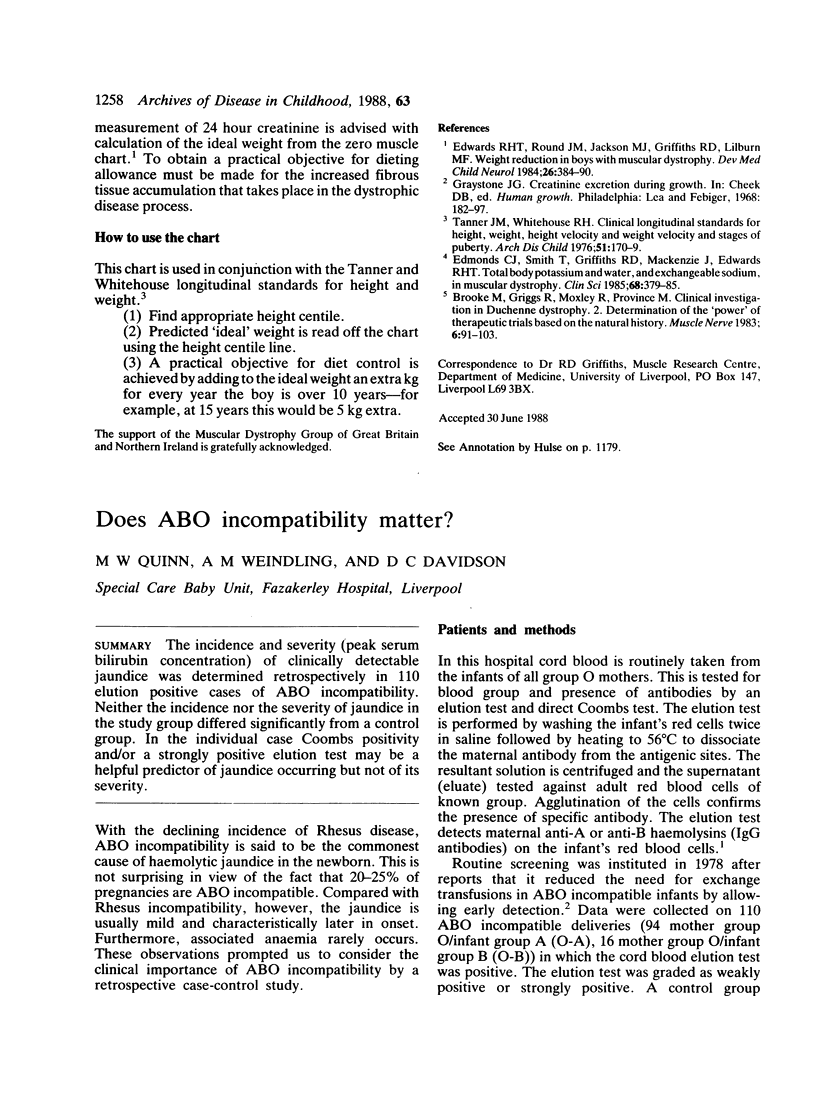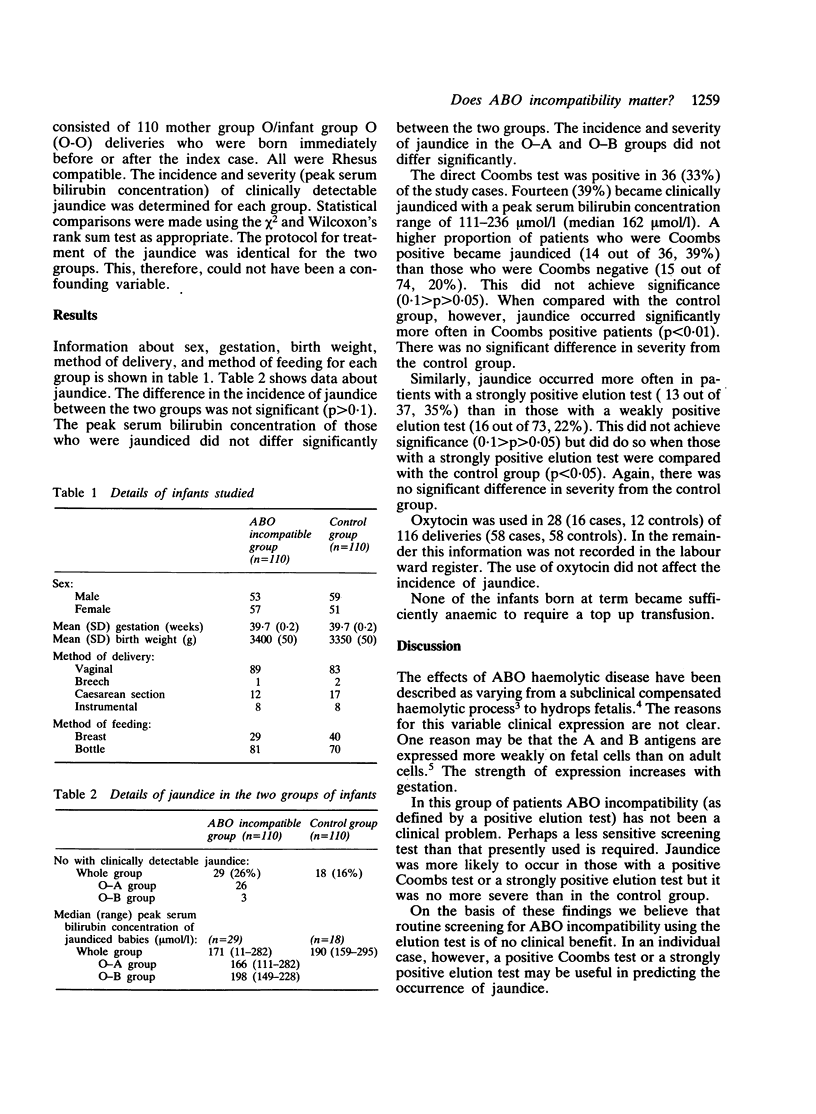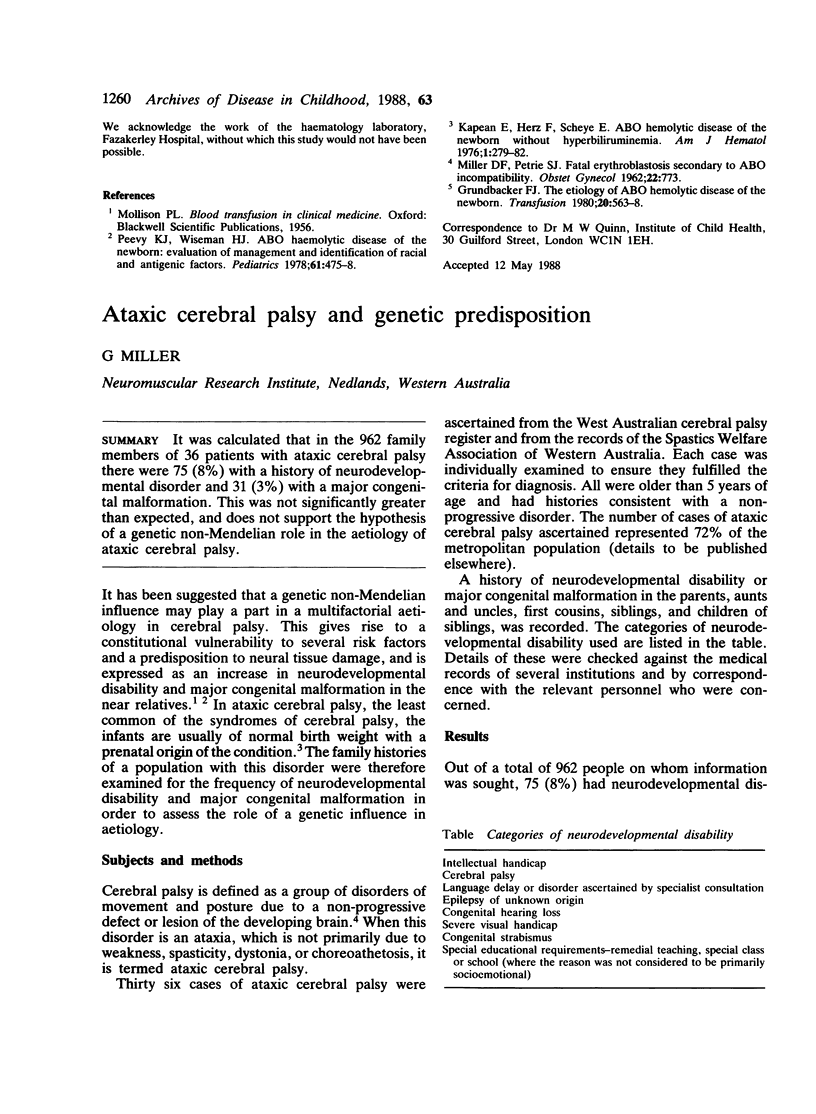Abstract
The incidence and severity (peak serum bilirubin concentration) of clinically detectable jaundice was determined retrospectively in 110 elution positive cases of ABO incompatibility. Neither the incidence nor the severity of jaundice in the study group differed significantly from a control group. In the individual case Coombs positivity and/or a strongly positive elution test may be a helpful predictor of jaundice occurring but not of its severity.
Full text
PDF


Selected References
These references are in PubMed. This may not be the complete list of references from this article.
- Grundbacher F. J. The etiology of ABO hemolytic disease of the newborn. Transfusion. 1980 Sep-Oct;20(5):563–568. doi: 10.1046/j.1537-2995.1980.20581034512.x. [DOI] [PubMed] [Google Scholar]
- Kaplan E., Herz F., Scheye E. ABO hemolytic disease of the newborn, without hyperbilirubinemia. Am J Hematol. 1976;1(2):279–282. doi: 10.1002/ajh.2830010212. [DOI] [PubMed] [Google Scholar]
- MILLER D. F., PETRIE S. J. FATAL ERYTHROBLASTOSIS FETALIS SECONDARY TO ABO INCOMPATIBILITY. REPORT OF A CASE. Obstet Gynecol. 1963 Dec;22:773–777. [PubMed] [Google Scholar]
- Peevy K. J., Wiseman H. J. ABO hemolytic disease of the newborn: evaluation of management and identification of racial and antigenic factors. Pediatrics. 1978 Mar;61(3):475–478. doi: 10.1542/peds.61.3.475. [DOI] [PubMed] [Google Scholar]


